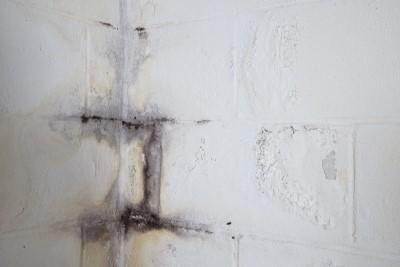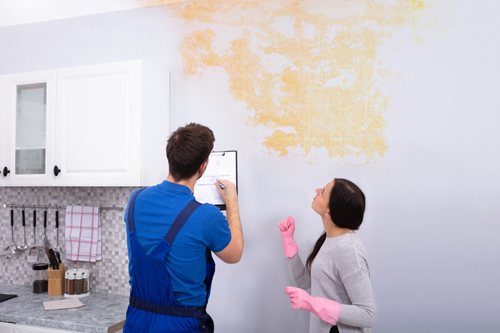Water Stain on Walls - Inspection and Repair Advice
Water Stain on Walls - Inspection and Repair Advice
Blog Article
Every person seems to have their private idea when it comes to How to Remove Water Stains from Walls and Ceilings.

Water spots on wall surfaces are not pleasurable to the eyes. Sometimes it appears almost inescapable to experience water discolorations on walls in houses.
Homeowners staying in humid areas constantly take care of the worry of water spots on walls. That does not have to be the situation for you. With well-shaped and also accurate information on the root causes of water stains as well as punctual repair service processes, you will constantly be an action ahead of such occurrences. This short article assures to be an useful guide for you.
3 Typical Sources Of Water Spots on Wall Surfaces
As opposed to common belief, water stains on wall surfaces do not always stem from inadequate building products. There are a number of reasons for water discolorations on wall surfaces. These include:
Poor Water drainage
When making a structure strategy, it is important to guarantee ample drain. This will certainly protect against water from permeating right into the wall surfaces. Where the water drainage system is blocked or missing, underground wetness develops. This web links to extreme dampness that you observe on the wall surfaces of your building.
The leading cause of wet wall surfaces, in this situation, can be a bad drainage system. It can also be due to poor administration of sewage pipelines that go through the structure.
Moist
When warm wet air consults with dry chilly air, it causes water beads to base on the walls of buildings. When there is steam from cooking or showers, this takes place in bathrooms and also kitchens. The water droplets can tarnish the bordering walls in these parts of your home and also spread to other areas.
Damp or condensation impacts the roof as well as walls of structures. When the wall surface is wet, it produces an appropriate environment for the growth of fungi as well as microorganisms.
Pipeline Leaks
The majority of homes have a network of water pipes within the walls. It constantly raises the viability of such pipes, as there is little oxygen within the walls.
Yet, a downside to this is that water leakage influences the walls of the building and causes widespread damage. A dead giveaway of faulty pipelines is the appearance of a water stain on the wall.
Water Discolorations on Wall: Fixing Tips
When dealing with water stains, property owners would generally want a quick fix. They would soon recognize this is disadvantageous as the water spots repeat. So, here are a couple of helpful ideas that will guide you in the repair work of water stains on walls:
Pro Tip
A houseplant in your house also increases its humidity. So, if your house is already moist, you might want to introduce houseplants with very little transpiration. An instance of suitable houseplants is succulents.
Conclusion
Although no one intends to have water stains on walls in their home, it can happen to the most effective of us. This short article offers you take advantage of, as you now understand how to manage this accident if it does take place.
It is constantly best to recruit professional solutions to assist fix the damages in your house.
Sometimes it appears practically inevitable to experience water discolorations on wall surfaces in homes.
In contrast to prominent idea, water spots on wall surfaces do not constantly stem from poor building materials. There are several reasons of water discolorations on walls. The water beads can stain the surrounding walls in these parts of your house and spread to other areas.
Below are a few useful pointers that will guide you in the fixing of water spots on wall surfaces:
How to Remove Water Stains From Your Walls Without Repainting
The easy way to get water stains off walls
Water stains aren’t going to appear on tile; they need a more absorbent surface, which is why they show up on bare walls. Since your walls are probably painted, this presents a problem: How can you wash a wall without damaging it and risk needing to repait the entire room?
According to Igloo Surfaces, you should start gently and only increase the intensity of your cleaning methods if basic remedies don’t get the job done. Start with a simple solution of dish soap and warm water, at a ratio of about one to two. Use a cloth dipped in the mixture to apply the soapy water to your stain. Gently rub it in from the top down, then rinse with plain water and dry thoroughly with a hair dryer on a cool setting.
If that doesn’t work, fill a spray bottle with a mixture of vinegar, lemon juice, and baking soda. Shake it up and spray it on the stain. Leave it for about an hour, then use a damp cloth to rub it away. You may have to repeat this process a few times to get the stain all the way out, so do this when you have time for multiple hour-long soaking intervals.
How to get water stains out of wood
Maybe you have wood paneling or cabinets that are looking grody from water stains too, whether in your kitchen or bathroom. Per Better Homes and Gardens, you have a few options for removing water marks on your wooden surfaces.
You can let mayonnaise sit on your stain overnight, then wipe it away in the morning and polish your wood afterward. You can also mix equal parts vinegar and olive oil and apply to the stain with a cloth, wiping in the direction of the grain until the stain disappears. Afterward, wipe the surface down with a clean, dry cloth. Try placing an iron on a low heat setting over a cloth on top of the stain. Press it down for a few seconds and remove it to see if the stain is letting up, then try again until you’re satisfied. (Be advised that this works best for still-damp stains.) https://lifehacker.com/how-to-remove-water-stains-from-your-walls-without-repa-1849742925

As a fervent reader about Indicators of Water Damage Behind Walls, I think sharing that piece of content was essential. Sharing is caring. Helping others is fun. Bless you for your time. Don't forget to come by our blog back soon.
Act, don't delay! Report this page